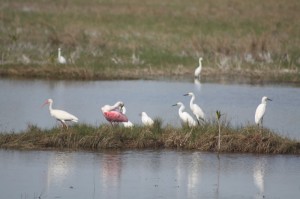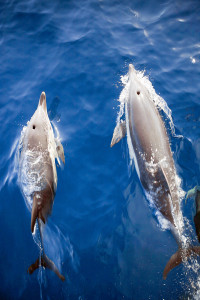 It’s that time of year again! Wildlife view season in the Everglades. Sure, you can see birds and animals in the Park year-round, but more species migrate to the area during this winter, dry season. Unlike other areas of the country, the Everglades remains warm and since it is the dry season, there are also low water levels, which creates the ideal environment for many species to spend there time in…and even breed.
It’s that time of year again! Wildlife view season in the Everglades. Sure, you can see birds and animals in the Park year-round, but more species migrate to the area during this winter, dry season. Unlike other areas of the country, the Everglades remains warm and since it is the dry season, there are also low water levels, which creates the ideal environment for many species to spend there time in…and even breed.
If you’re looking for an alligator, birds, or freshwater wildlife, your best bet is to head to Shark Valley, the Anhinga Trail (at Royal Palm) and Eco Pond. If you love birdwatching, Snake Bight (near Flamingo) and Chokoloskee Bay (Gulf Coast) are great spots to see water birds feeding.
The Everglades is a fragile habitat. From natural weather disasters to human development, the wetland has been stressed to be a healthy ecosystem. As humans, we are a guest in the Everglades; these animals and birds call this area home, so we need to respect them. They are wildlife, not pets, so it’s important to be respectful of all living creatures in the park, along with the Park itself. Bothering the animals could potentially stress them out or make them fearful or agitated. You do not want an animal angry with you, but also you do not want to upset an animal, because it could migrate or breed elsewhere (or not at all).
For this post, we wanted to share with you some wildlife viewing rules and tips while in Everglades National Park. Although some of these rules seem like no-brainers, it’s always good to refresh your memory. These rules come straight from the National Park Service.
- Keep a good distance away from all wildlife.
- Use binoculars or spotting scopes to get a berry view of any creature.
- Never chase or corner an animal.
- If an animal/bird seems agitated, back away, and even leave the area if it does not calm down.
- Stay on the trails. You don’t want to disturb nests and dens.
- Do not need wildlife.
- If you find a sick or hurt animal or bird, leave it alone. If you’re concerned, fine a Park ranger or employee.
- Do not bring your dogs onto the trails; they are not allowed.
- Respect the environment if you do choose to go off the trails.
You can either view wildlife by foot or by airboat! Come do some wildlife viewing by airboat on a ride with Captain Mitch. Captain Mitch’s Airboat Tours give you a glimpse of the Everglades like no other. To book an airboat ride, click here or call 800-368-0065.
 Atlantic bottlenose dolphins possess heightened senses allowing them to socialize, sympathize and strategize, deeming them the smartest animal in the Everglades. These magnificent marine mammals frequent south Florida and can be seen surfacing off the Gulf Coast and in the Everglades’ brackish waters.
Atlantic bottlenose dolphins possess heightened senses allowing them to socialize, sympathize and strategize, deeming them the smartest animal in the Everglades. These magnificent marine mammals frequent south Florida and can be seen surfacing off the Gulf Coast and in the Everglades’ brackish waters.





